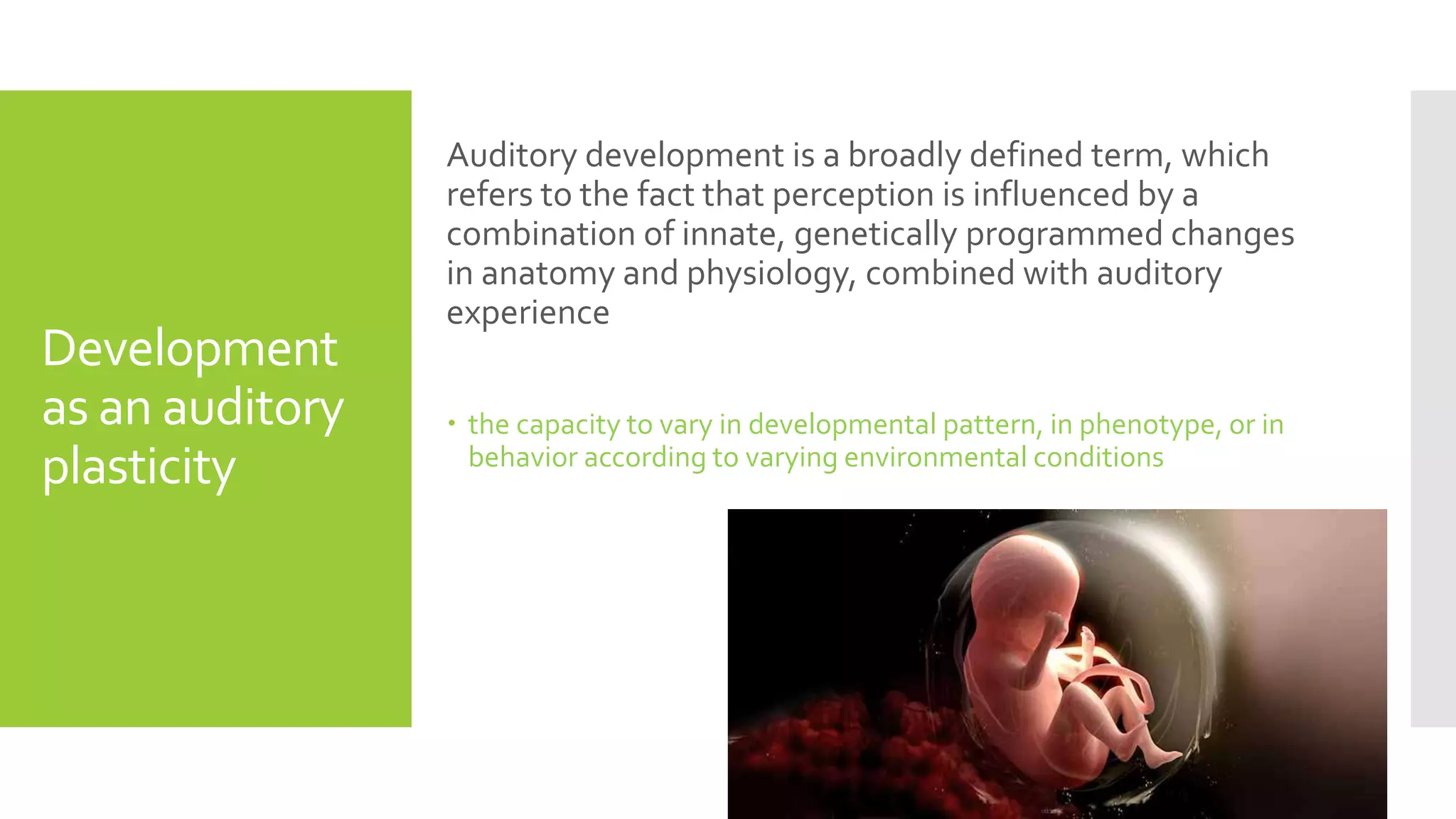1. Auditory plasticity refers to the ability of the auditory system to change in response to experience and environmental conditions.
2. The auditory system develops both anatomically and functionally after birth, with many capabilities like sound detection, discrimination, and localization continuing to mature into childhood.
3. Early auditory experiences, particularly with speech and music, are important for the development and maturation of the auditory system. There appear to be sensitive periods where exposure can influence development.


















































































